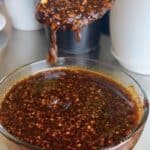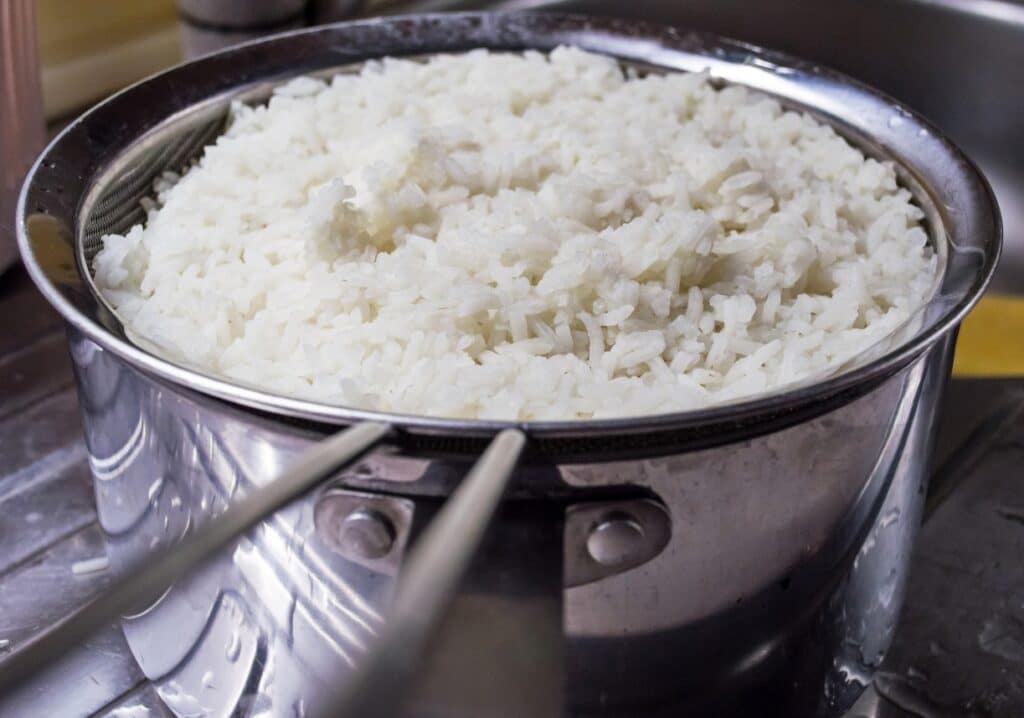The History of Cinco de Mayo: What Is It, Who Celebrates It—and Why?
- April 2021
- By Karina Corona
- Recipe from Mexico

Spoiler: It’s more than an excuse to order one too many margaritas
If you’ve ever been anywhere near a happy hour on the fifth of May in the United States, you’re likely familiar with the following scene: Mexican flags, mariachis, sombreros, tacos, tequila (lots of tequila) and people yelling “cinco de drinko.”
In reality, this day marks a major military win for Mexico and the resistance leaders who fought to undo classist policies and give Mexican citizens their first bill of rights.
What Is Cinco de Mayo Really About?
Long story short, the dia de fiesta now known as Cinco de Mayo was a major win for Mexican independence and a big L for the Napolean-era French army. The full story, however, is a bit more dramatic. In order to paint a full picture of why this holiday is celebrated, we first have to travel back in time to the late 1800s.
Following a half-century, after Mexico gained independence from Spain, the country was now back at war; this time with itself. Seeking liberation from conservative dictator Antonio López de Santa Anna, former leaders of the independence movement, along with their young leader Benito Juárez, began a liberal social and political revolution known as La Reforma which lasted from 1854-1876.
After defeating Santa Anna in 1855, Juárez became the 26th president of Mexico in 1858, opening the way for the liberal party to enact the reform they were fighting for.
We’re not saying you shouldn’t enjoy the tequila-y-taco special día at your local Mexican restaurant. What we are suggesting is: Consider Cinco de Mayo an opportunity to learn about a day that originally celebrated Black and brown solidarity against colonialism and slavery.
However, the country’s reform caused its economics to begin to crumble. In an effort to stabilize Mexico, President Juárez decided to suspend payments covering foreign debt on June 17, 1861. This decision would go on to affect countries like Spain, England and France. (Remember this last country for later.)
Upset with Juárez’s decision, the three countries agreed to send their military forces to Veracruz to demand payment—but this was more bark than bite. Mexico came to an agreement with Spain, England and France following the ratification of La Soledad treaties in March 1862.
This is where it starts to pop off (Remember when I said: remember France?). Unhappy with the outcome, the French government continued with its armed intervention and began its crusade to overtake the capital and restore the old, conservative world order. But in order to get to Mexico City, they first had to get through the town of Puebla.
While the French army of an estimated 6,000 believed this would be a quick and easy win on May 5, 1862, General Ignacio Zaragoza and his out-numbered army of indigenous and mixed ancestry Mexican soldiers met the French forces ready for a fight. Charge after charge, the French army was unable to break through—and eventually retreated.
Why Is Cinco de Mayo Popular in the U.S.?
The day is so widely known in the U.S. that it’s often confused with Mexico’s Independence Day—but that’s celebrated on September 16 and occurred more than 50 years before la Batalla de Puebla.
Some historians say that the first Cinco de Mayo party happened in a California town called Columbia in Tuolumne County. The year was 1862 and it had been just weeks since the Battle of Puebla was won. It’s reported that when the news reached the town, the mostly Mexican population was so happy they partied late into the night.
Eventually, that sense of Mexican pride spread throughout the rest of the country. Starting in the late 1950s, an uptick of civil rights movements led by Black and brown folks advocating for social and political empowerment began to pick up momentum throughout the U.S.—and so did the legacy of Cinco de Mayo. In the 1980s, Anheuser-Busch and Miller beer companies saw a new market opportunity, launched “Hispanic Marketing” internal departments, and started to go big on the day. And, as they say, the rest is historia.
Do Mexicans Celebrate Cinco de Mayo?
Despite there being a second Battle at Puebla where the French won in 1863 (which led to a short-lived French occupation), the 1862 win was established as a symbol of unity and pride. During the Porfiriato, the period when General Porfirio Díaz ruled Mexico, the day was celebrated with fervor, as Díaz was one of the protagonists of the Battle of Puebla.
On the menu at these celebrations are traditional comidas, like mole poblano, chalupas and chicken tinga—as well as dishes that are always bienvenidos and accessible like guacamole, enchiladas, and tacos, accompanied by Mexican beer and/or anything tequila: margaritas, palomas or (in the spirit of KISS) straight up.
Cinco de Mayo is mostly celebrated in the state of Puebla. While it’s not recognized as a federal holiday, the streets throughout this colonial city in central Mexico are filled with parades, dancing, music and pride. In the U.S., annual festivals in large cities like Los Angeles, Chicago, New York City and Houston, where large Latinx populations live, and throughout other Latinx communities across the country are had to celebrate Mexican heritage.
On the Menu for Cinco de Mayo
On the menu at these celebrations are traditional comidas, like mole poblano, chalupas and chicken tinga. In the States, dishes that are always bienvenidos and accessible include guacamole, enchiladas and tacos. And let’s not forget about drinks. This food always goes best with a Mexican beer and/or anything with tequila, like a margarita, paloma or, in the spirit of KISS, the agave spirit straight up. And if you want to get really fancy, break out the crystal tequila sipping glasses, says Familia Kitchen’s tequila expert and world-renowned Catadora MariCarmen Ortiz Conway of MexicoAcompañado.com.
Similar to St. Patrick’s Day in the States, it’s all celebration, some culture, and lots of confusion. A 2020 YouGov survey found that only 28% of adults in the U.S. felt confident knowing what Cinco de Mayo celebrates. Bonus: 41% of adults thought Cinco de Mayo is Mexico’s Independence Day (nope, that’s September 16), and another 19% were unsure.
We’re not saying you shouldn’t enjoy the tequila-y-taco special día at your local Mexican restaurant. What we are suggesting is: Consider Cinco de Mayo an opportunity to learn about a day that originally celebrated Black and brown solidarity against colonialism and slavery.
And while it’s impossible to generalize the sentiments of an entire group of people, one thing is clear: Please skip the whitewashed sombreros, ponchos and fake mustaches. Cultural appropriation is so passé.
Photo: Moussa81
Like This









Got a question or suggestion?
Please rate this recipe and leave any tips, substitutions, or Qs you have!